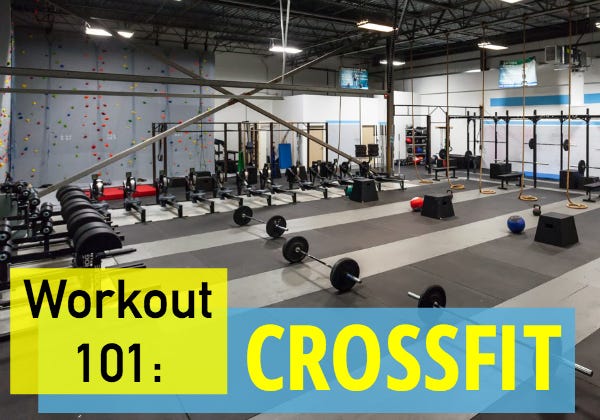Here at SG HQ, we believe in going further and pushing yourself, be it stepping outside your style comfort zone or hitting that last set of squats at the gym. That’s why we created the “Workout 101” series, providing the down low on all the latest fitness trends that will have you looking good and feeling even better. Up next? CrossFit.
Describing CrossFit as a fitness program seems to miss the point somehow. Because the goal of CrossFit is not to become amazing at CrossFit. Rather, the goal is to get you in shape for any sport or physical activity you want to take on—whether that’s skiing, mountain climbing, or merely showing off at a party by doing an absurd number of push-ups.
“Our specialty is not specializing,” says trainer Emery Dawson, of CrossFit San Diego.
How you get there, of course, is the trick, and CrossFit will make you work for it. With the exception of yoga (and maybe Spinning?) CrossFit and its devotees truly inhabit a world of their own. That means its own vocabulary, its own style of workouts, its own way of communicating those workouts, its own injury concerns (Google “rhabdomyolysis”), its own abbreviations (“OHWL” is just one of dozens), its own diet (Paleo is not required, but it is popular) and its own massive, and massively committed, community.
Interested? Here’s what you need to know before you go:
WHAT IT IS
CrossFit begins with an introductory class—check the website for your local CrossFit gym for the scheduling; these are usually free. After this, you can attend an intermediate class, often called “On Ramp”—these are meant to get you ready for the regular group classes and will provide instruction on proper form for the core CrossFit moves (think: burpees, lunges, pull-ups) and equipment (kettleballs, barbells, jump ropes, etc.)
RELATED: What to Know About Pilates
Once you graduate from that, you’re ready for the regular group classes and the Workout of the Day (a.k.a. “WOD”). This is where the CrossFit magic starts: It’s a mix of cardio and strength training, and is designed to turn you, well, superhuman.
It will be written in shorthand that might look like nonsense but CrossFitters will understand immediately (“15 C2B Pull Ups, 20 Wall Balls (20/14)(30/20)”). This is where your body changes (and the pain happens).
GUY-TO-GIRL RATIO
Closer to even than you might think: Some boxes have more guys than women, some go the other way.
CHOREOGRAPHY COMPLEXITY
High. It’s true that many of the core moves in CrossFit are both familiar and straightforward—plenty of us have been doing burpees and squats since grade school. But these basic moves are often done with high intensity and repetition—which means that even small mistakes can add up over thousands of iterations. That’s one of the reasons why Googling “CrossFit injuries” will give you over a million results.
Of course, devotees will stress the fact that newbies have plenty of opportunities to ask questions and get advice on proper form. Here’s the thing: Part of the reason CrossFit is so successful is that it stokes the competitive fires, and it’s proven to be attractive to people who love a challenge, and who love to push their limits—and sometimes cross over them. (Doing 100 pull-ups and being in physical condition to do 100 pull-ups without injuring yourself: two different things that are not always seen as such.)
CrossFit can also be super intimidating for the uninitiated—walking into the “box” the first time is scary! Just come to terms, though, with looking like an idiot those first couple weeks, and ask all the questions you have about how, exactly, things work—“things” like double-unders and handstand push-ups—and your body will be happier in the long term.
SHOWER-METER
Oh, yes.
HOW HARD IS IT, REALLY?
It is famously, reliably tough. If it works for you—and it’s worked for a lot of people—that effort could result in a best-ever fitness level, plus a tight-knit community that’s hard to match.
When you feel good, you look good. Check out our workout guides to Rowing, TRX,and Spin.






